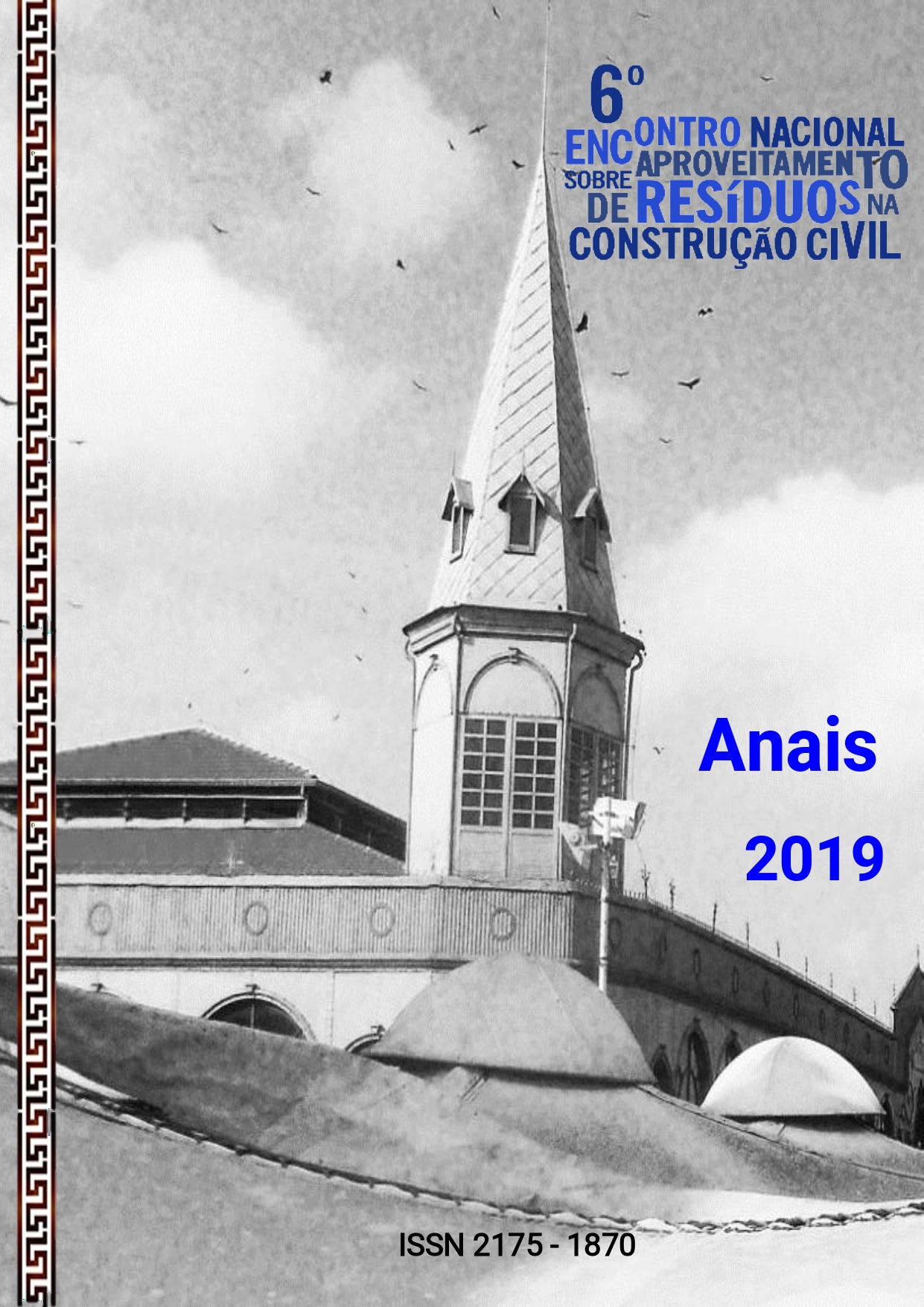REFLECTANCE SPECTROSCOPY APPLIED TO THE CHARACTERIZATION OF SUPPLEMENTARY CIMENTARY MATERIALS AND WASTES
Keywords:
Reflectance spectroscopy, wastes, suplementary cementitious materialsAbstract
Reflectance spectroscopy is a widely used technique, with applications, for example, in the characterization of rocks and minerals, soils and vegetation. However, the researches of this technique applied to civil construction seems to be superficial. The application of the technique to characterize different materials is due to the changes in the absorption characteristics of different wavelengths, which are specific to each material; and with this it is possible to recognize different chemical compositions and even variations of concentration. Therefore, the use of this technique, for the characterization of materials and wastes with potential use in civil construction, can become a viable alternative in research and development of new products. The aim of this work was to evaluate the reflectance spectroscopy in suplementary cementitious materials and wastes, observing different spectral behavior. The following materials were used: CP-V cement, clinker, limestone filler, metakaolin, ceramic waste, fly ash, rice husk ash and glass lapidation waste. The results show that each of the studied materials has a specific pattern, corroborating with the different chemical compositions. Demonstrating that reflectance spectroscopy is an effective technique for the differentiation of these materials, in addition to being fast, effective and non-destructive.

